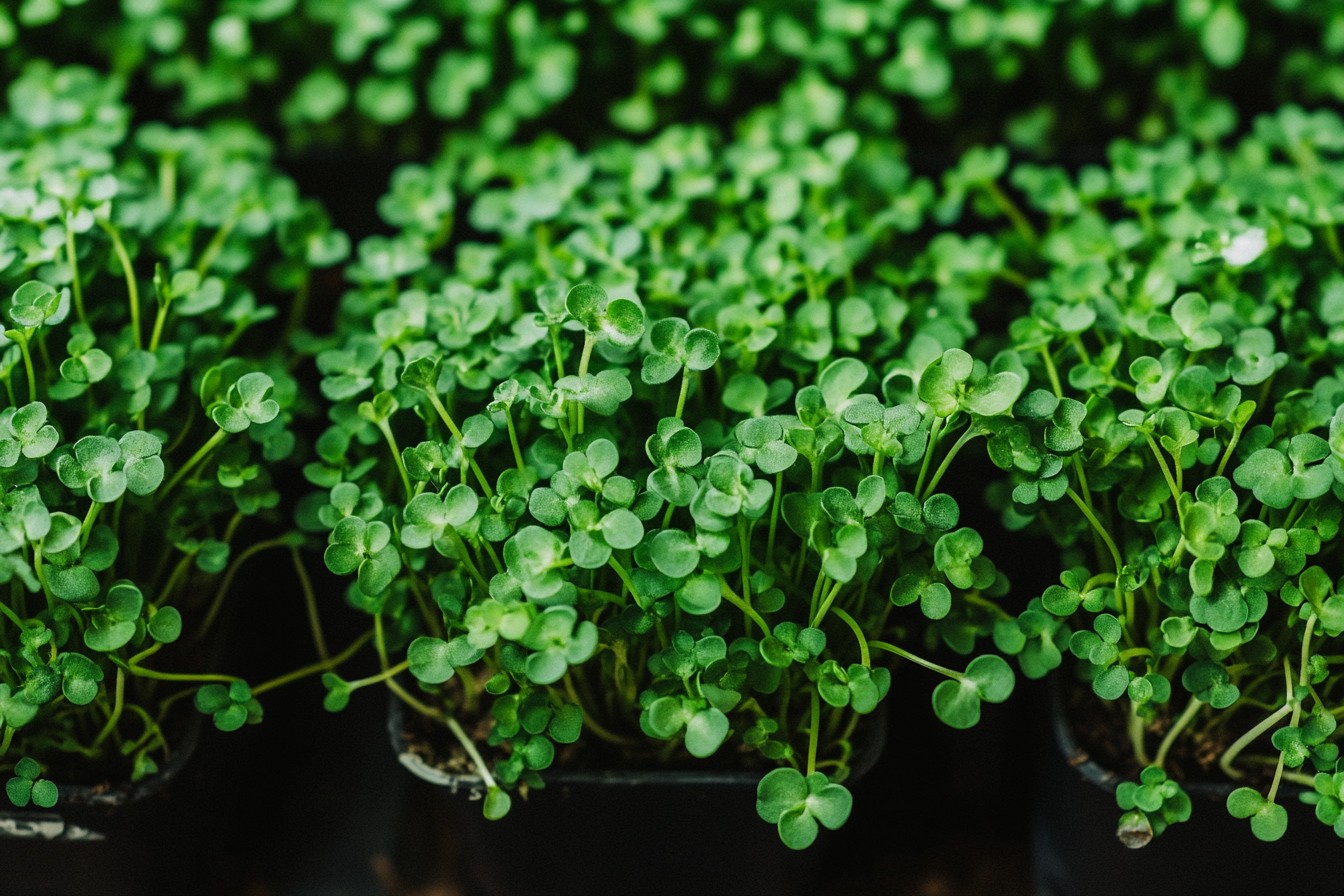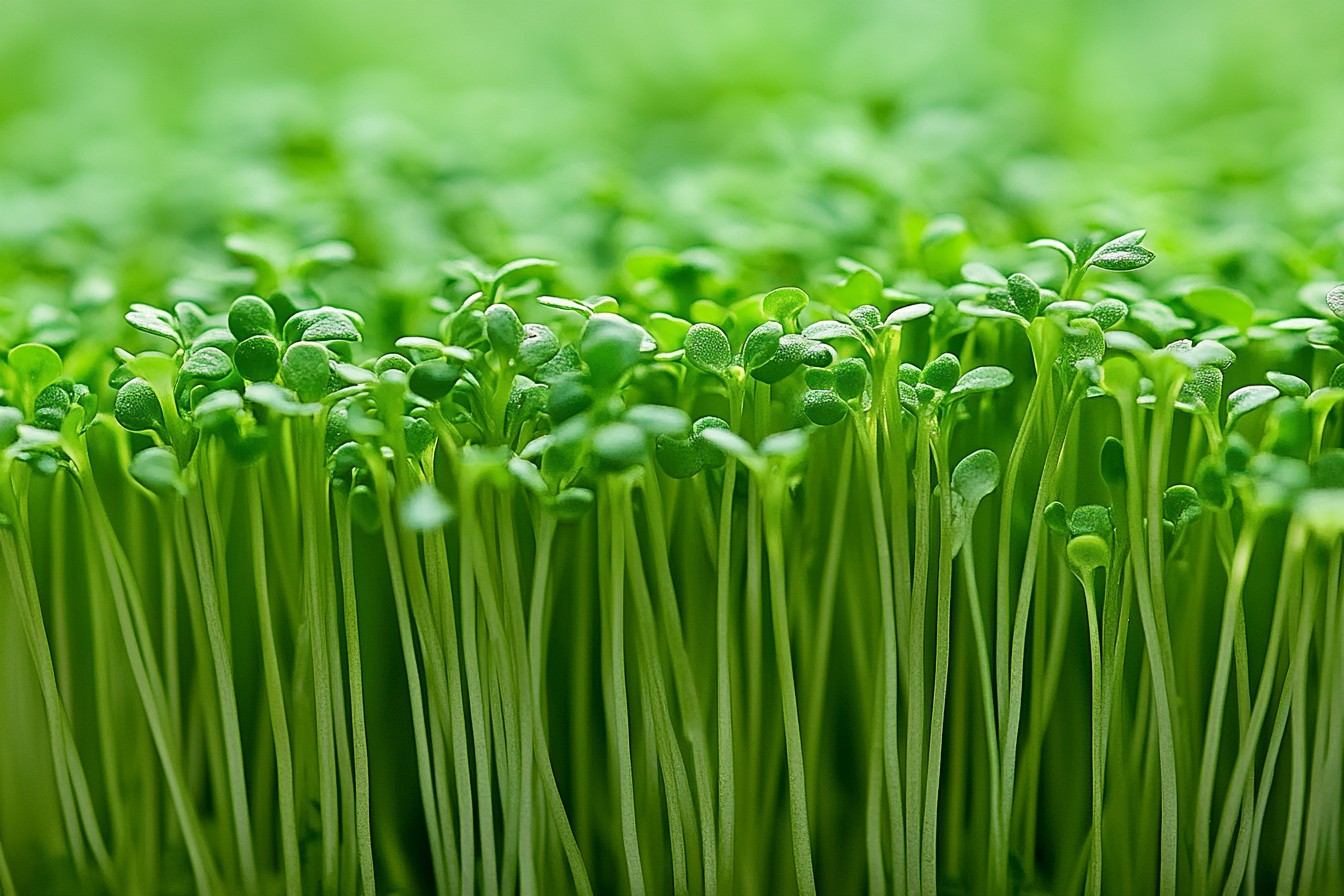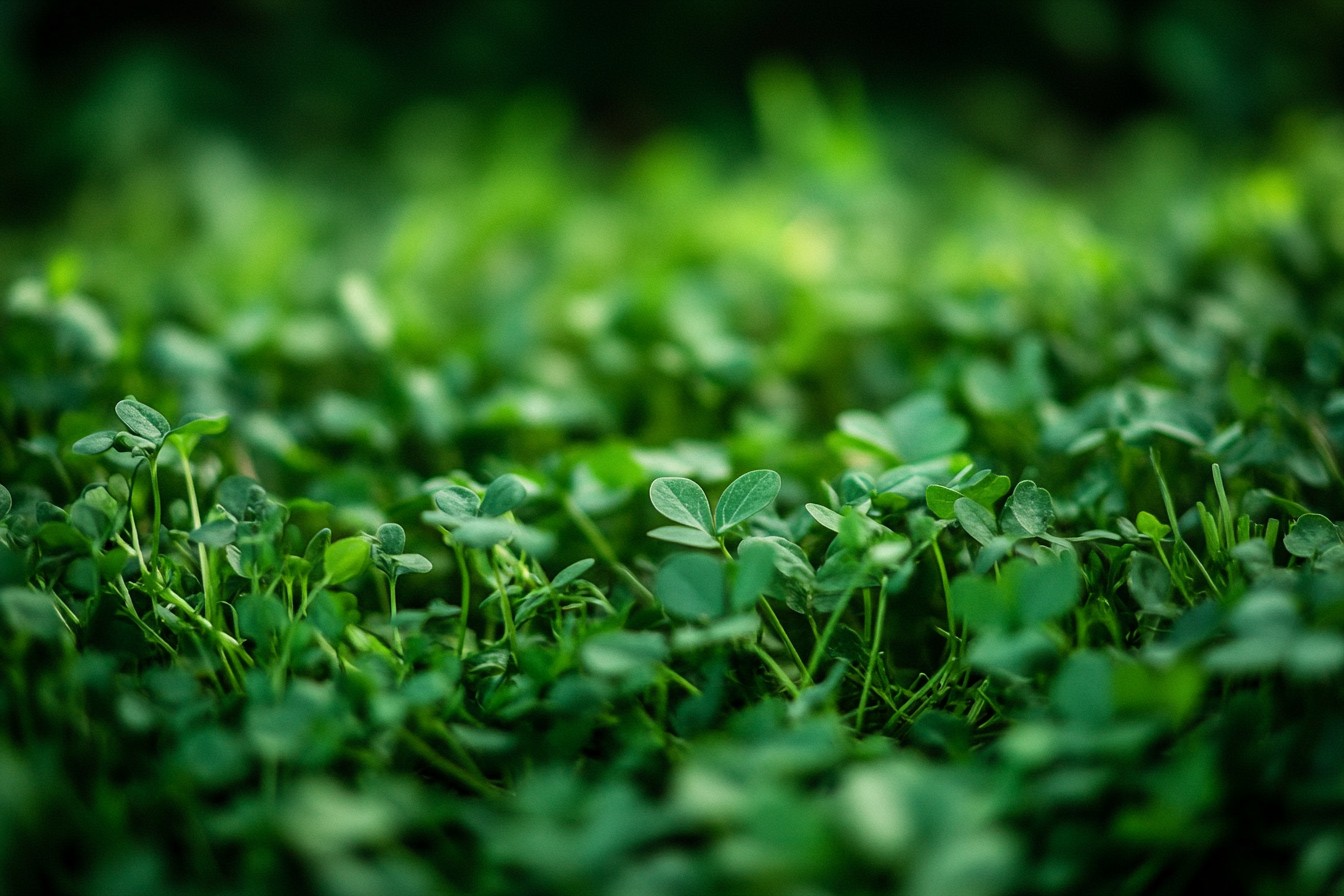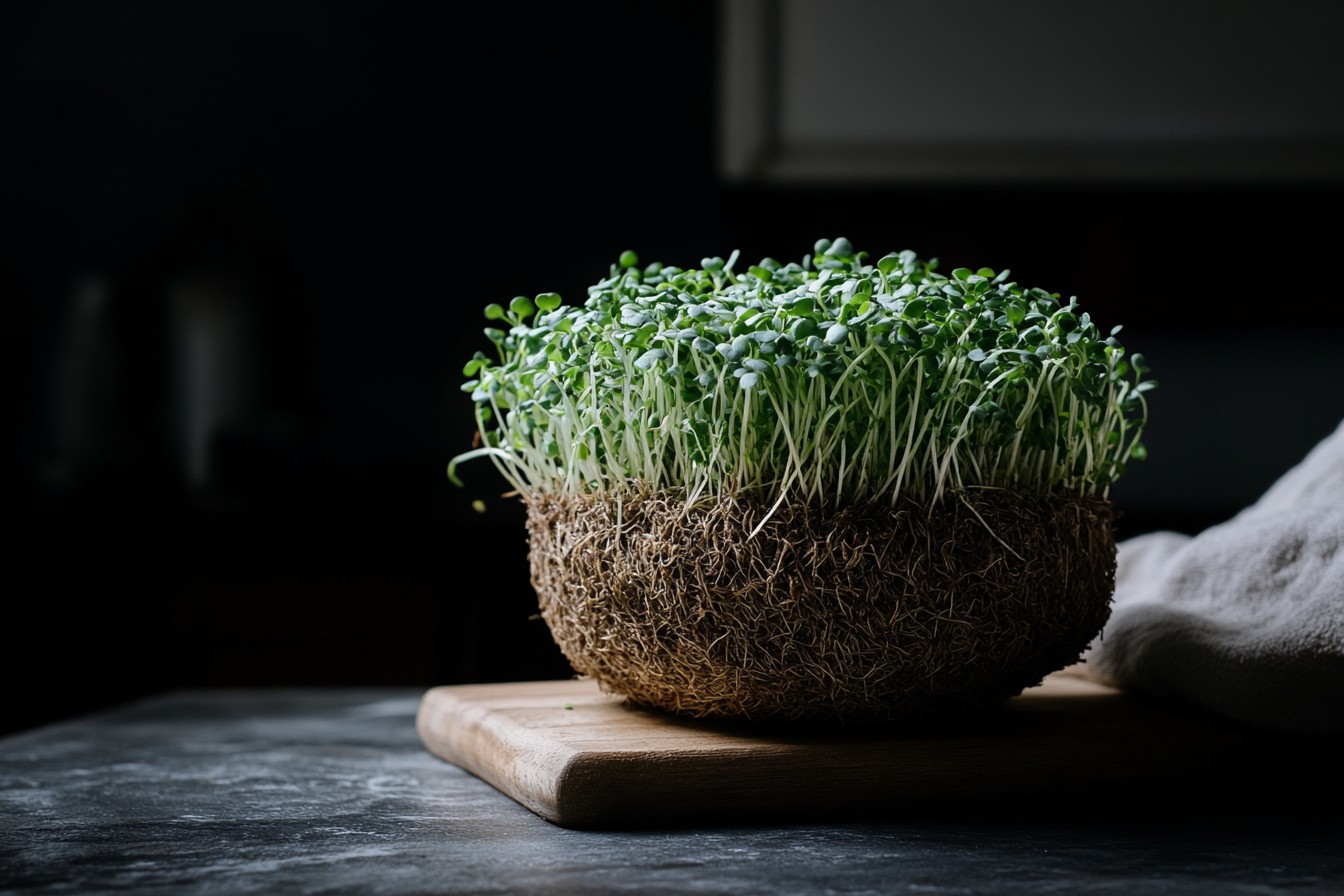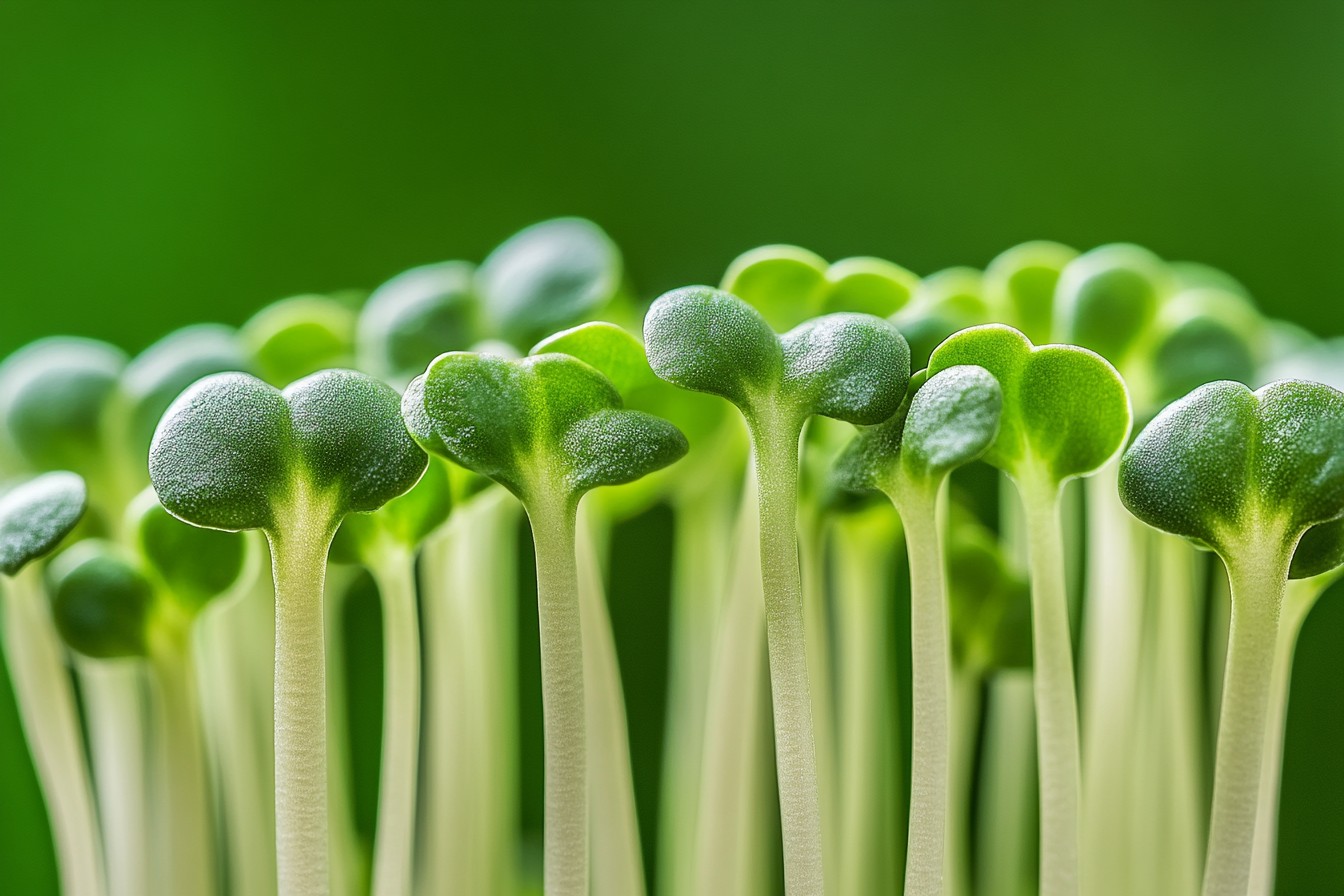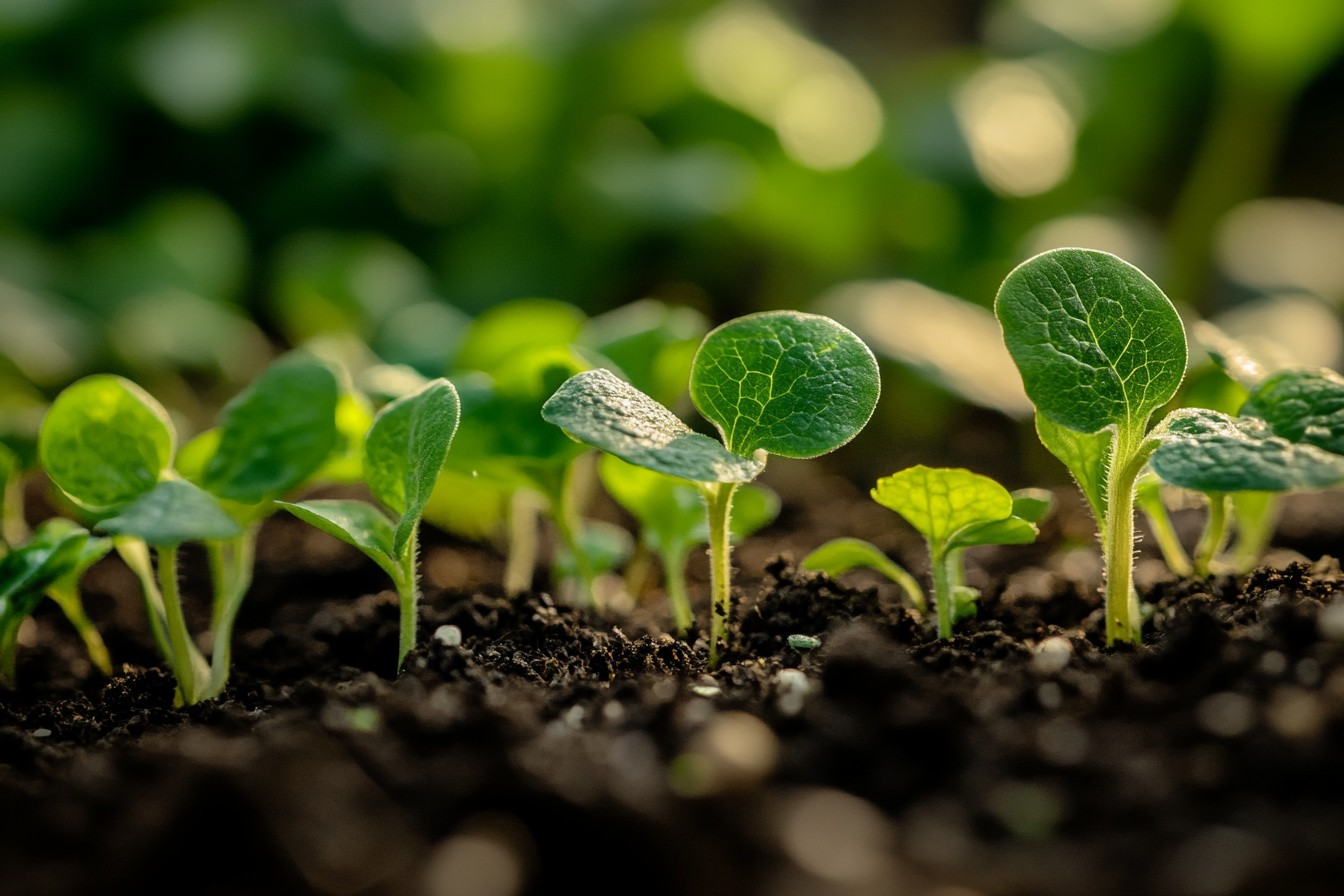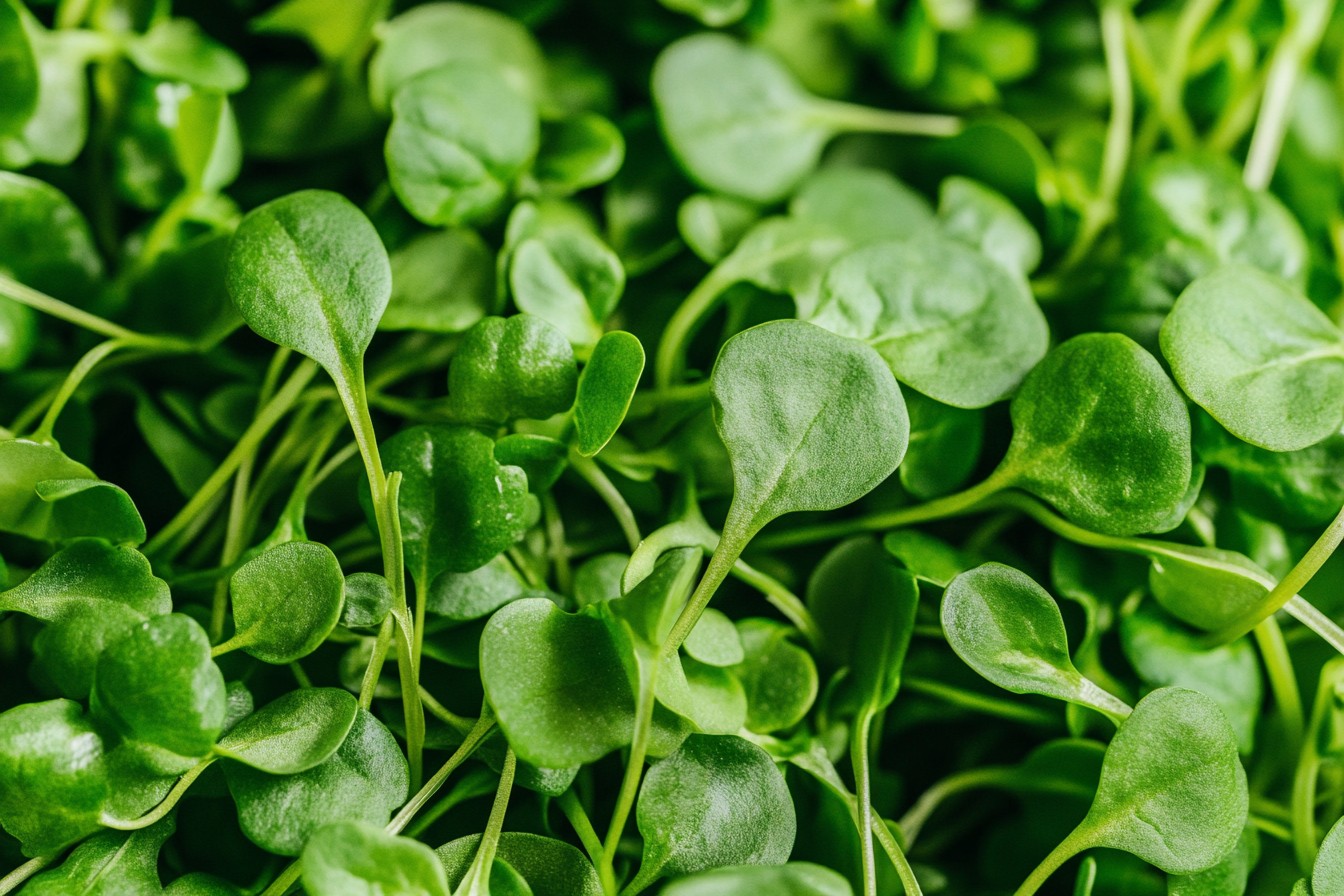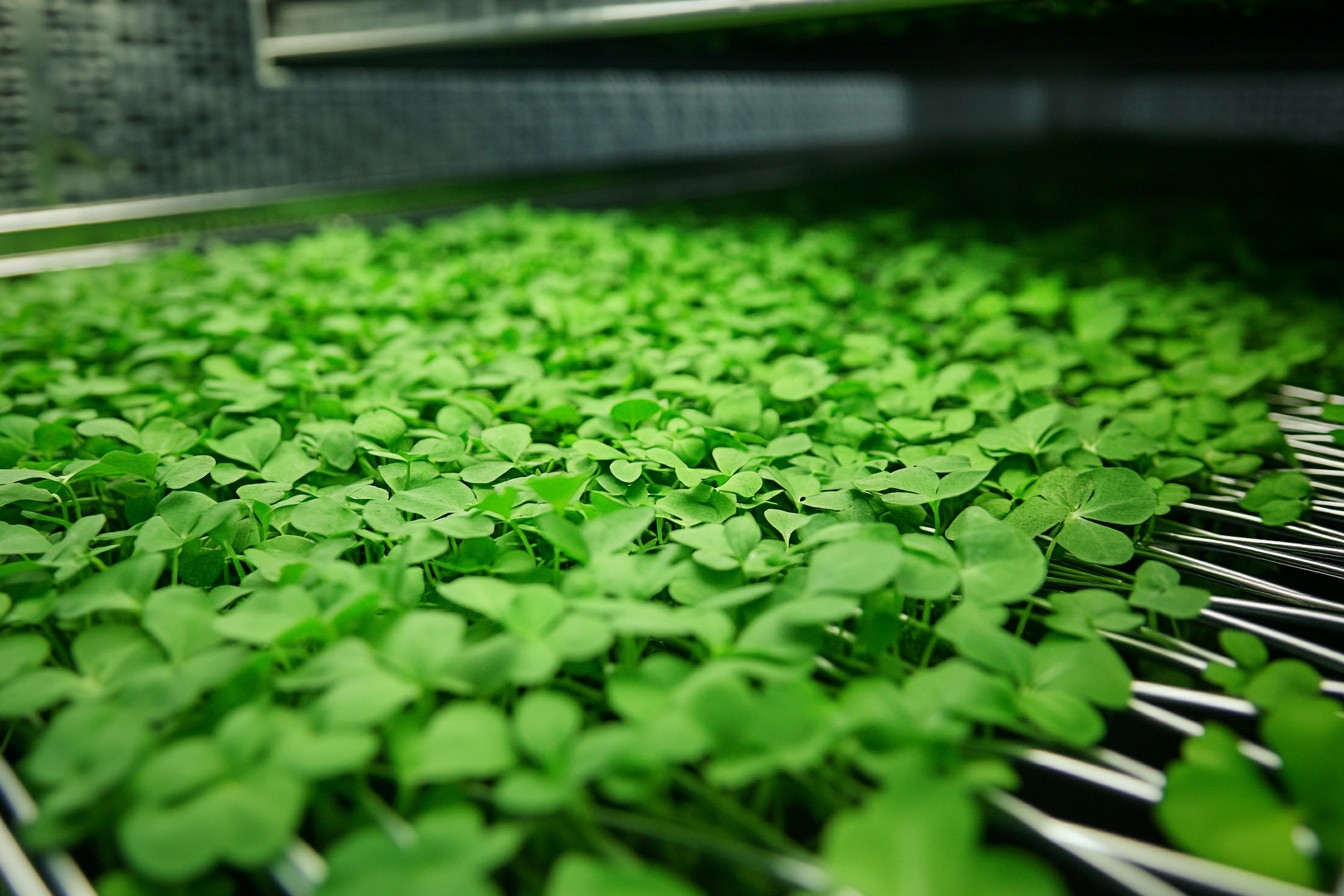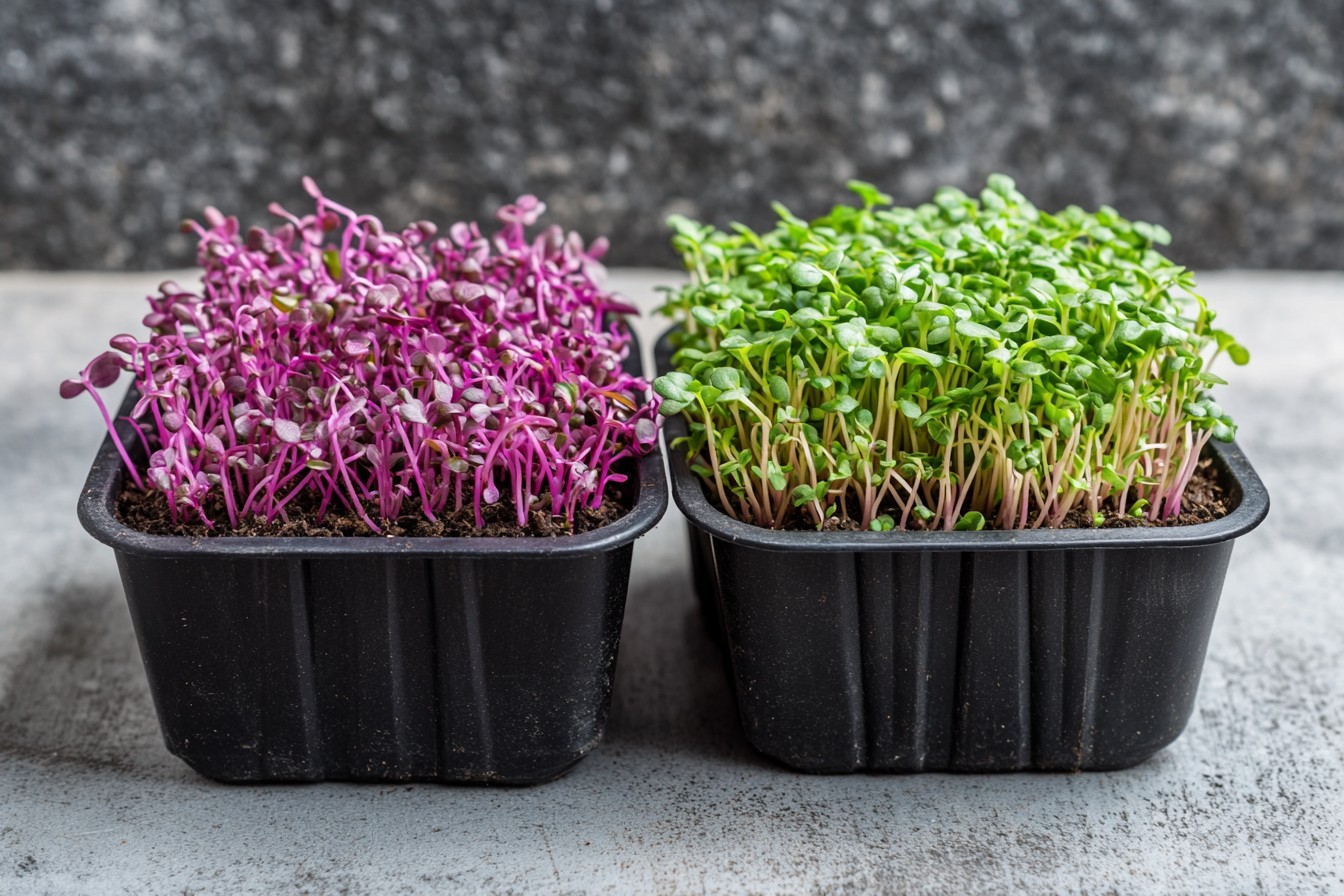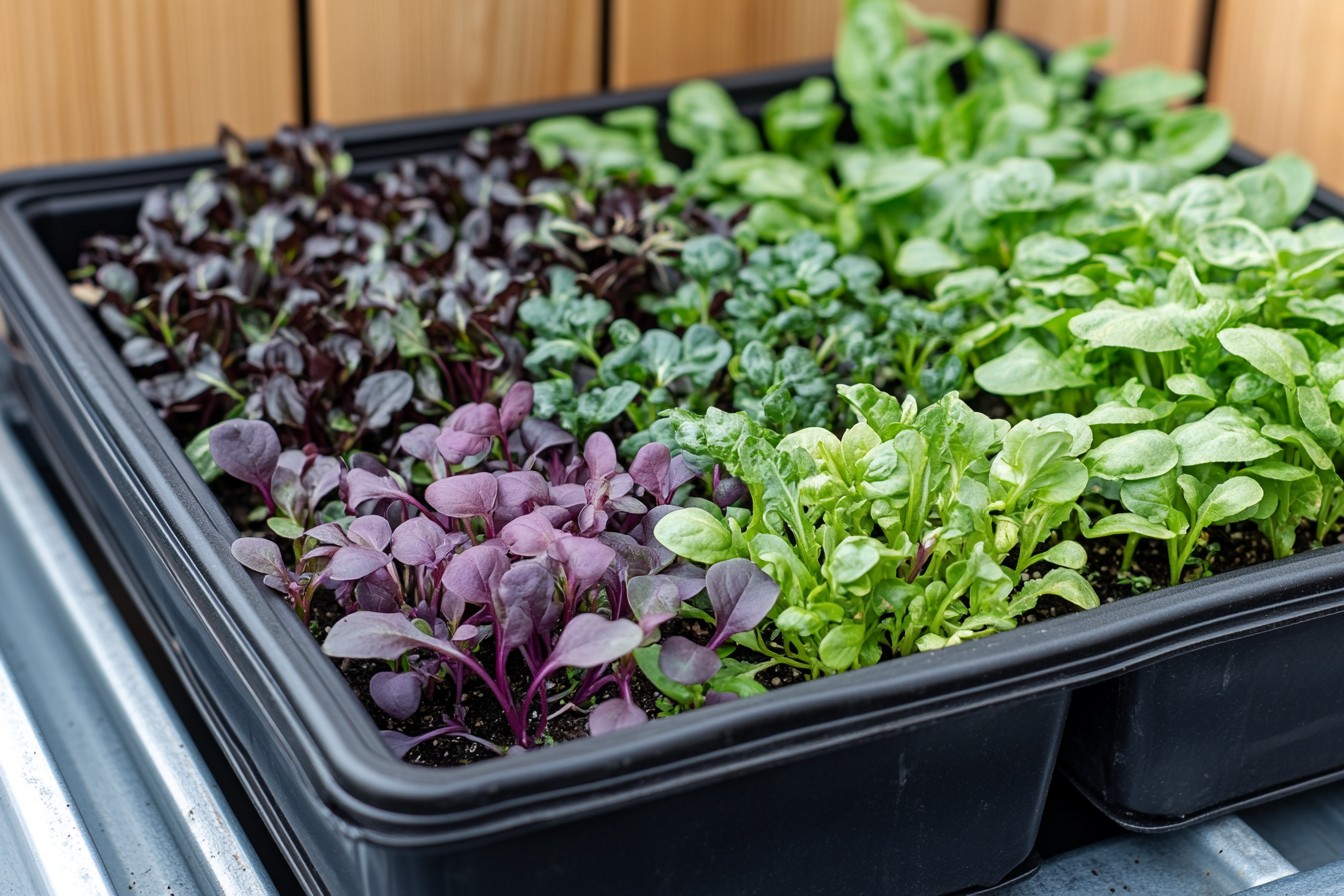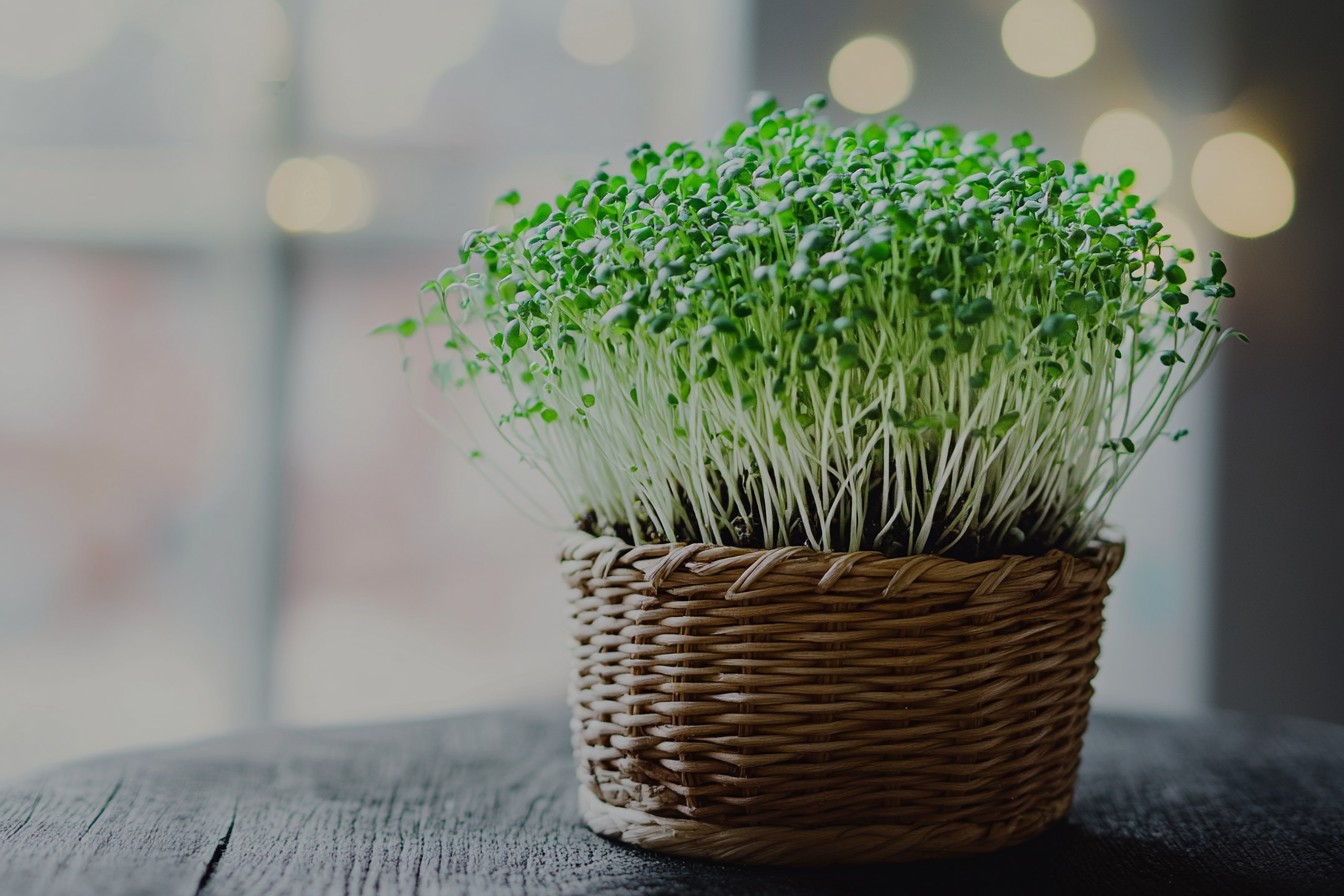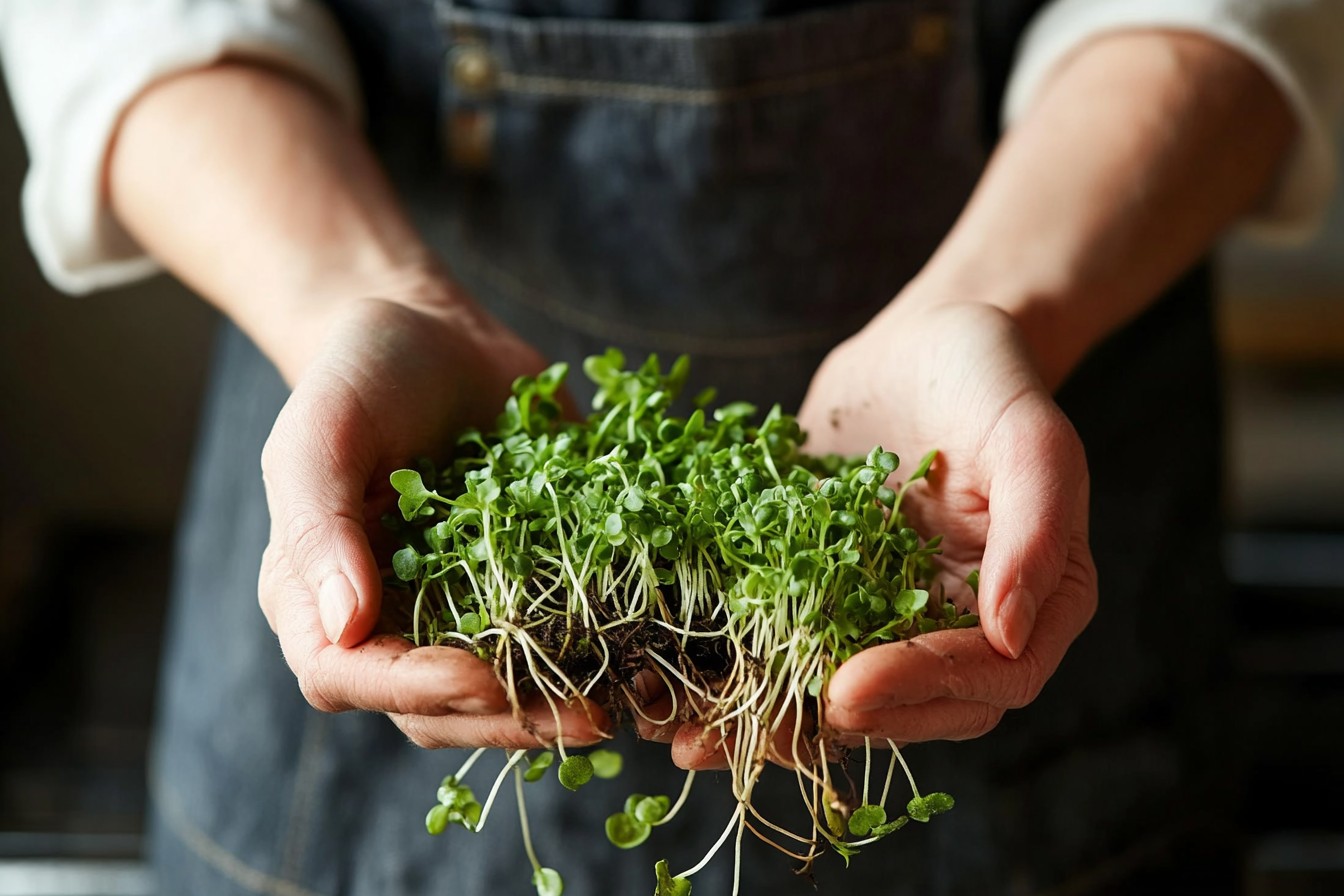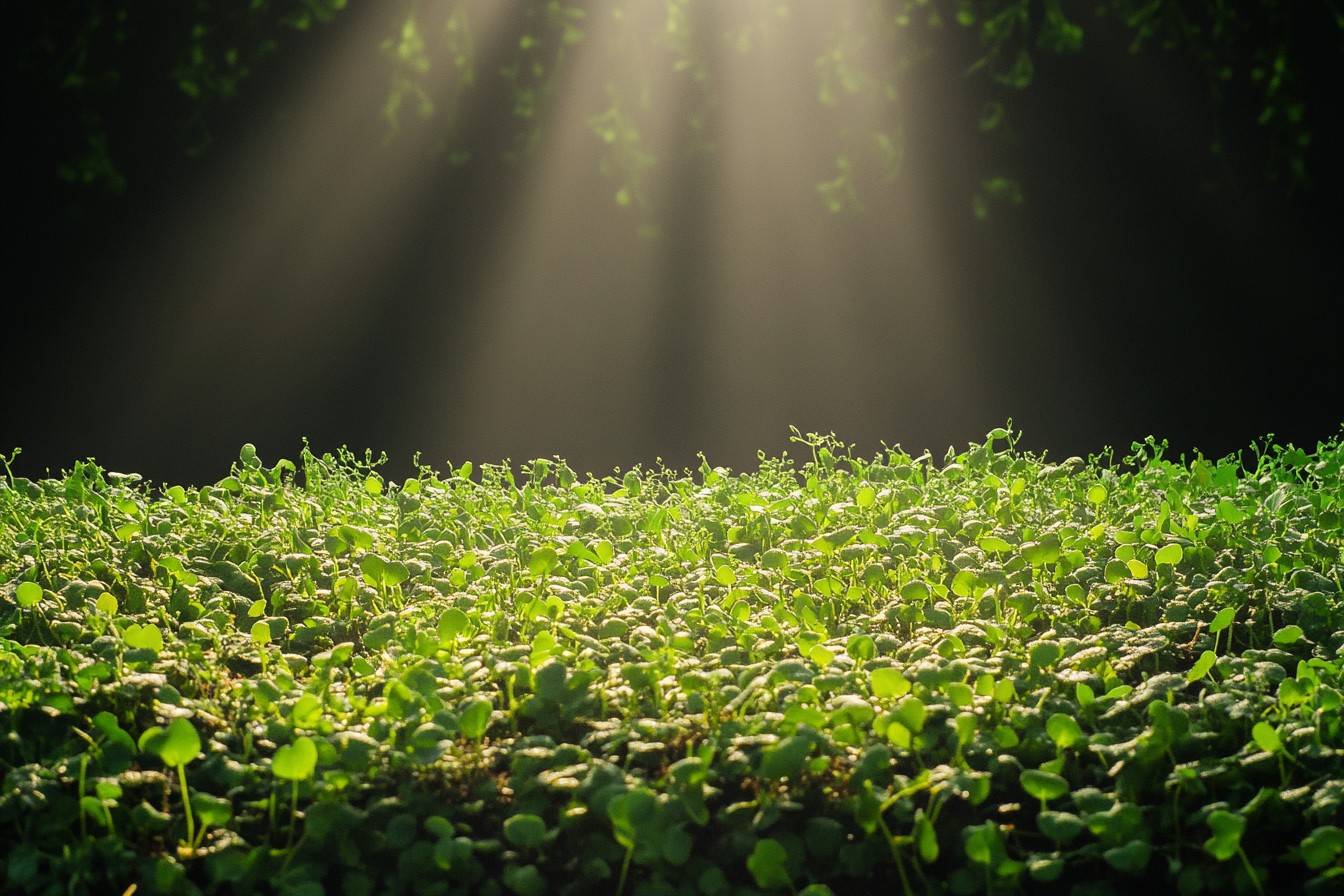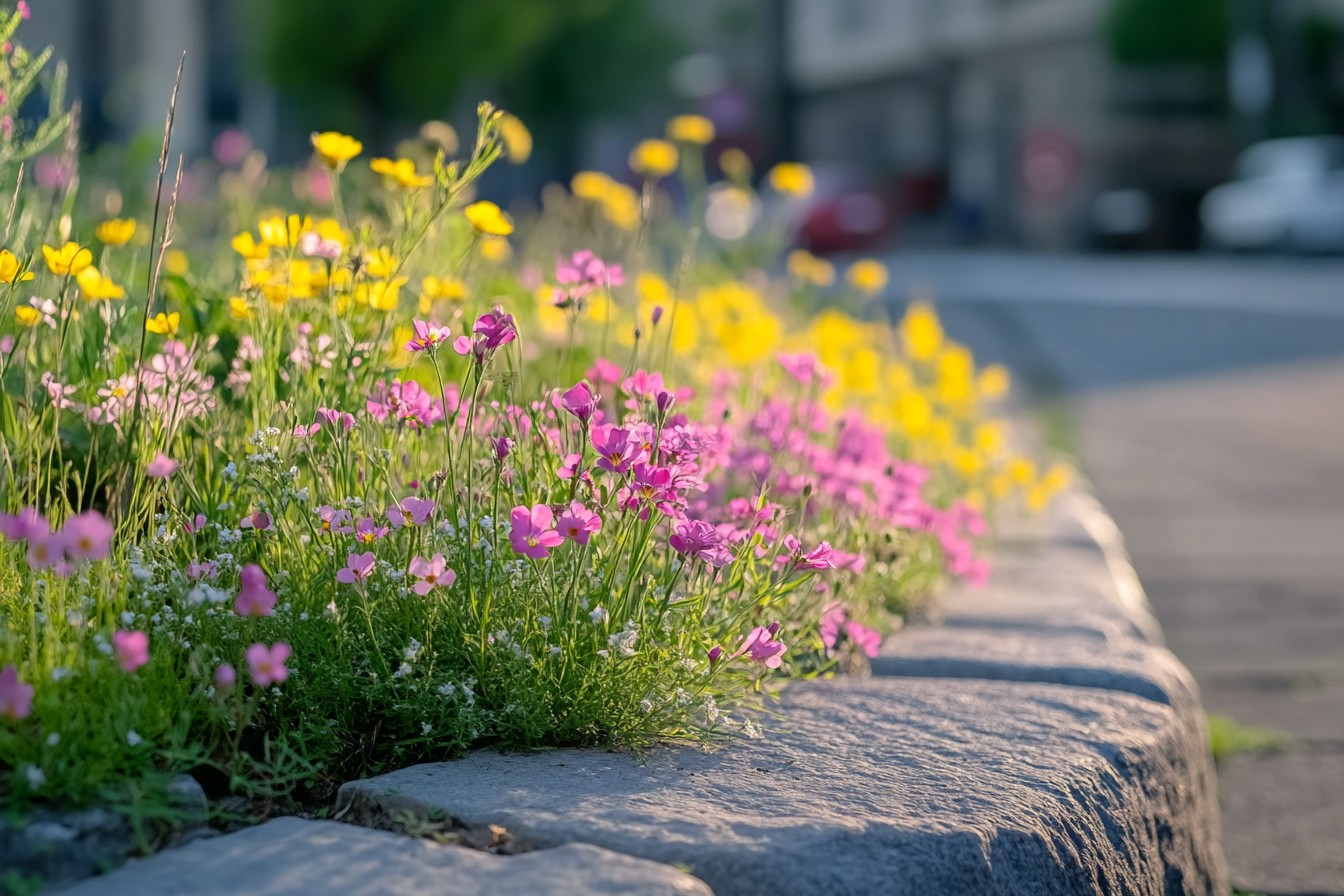My personal awakening to microgreens’ obsession did not happen when I transformed my kitchen countertop into a designated growing station or stole a spray bottle from the bathroom to keep ‘just in case my babies get thirsty’ for my ‘special microgreens.’ Yes, my roommate Dave constantly mocks me for this. And I did not even become aware after splurging $87 on Japanese radish seeds that promised exceptional pungency and my entire apartment smelled like wasabi for a week. No, my moment of reckoning came while in the middle of a workweek at 11:30 PM, measuring micron levels with a digital caliper measuring the height of sunflower microgreen stems, muttering about optimizing cut points and yield differentials.
“Mark, this is why you are single” are the words I was left off with after my long-time friend grabbed a beer and retreated to his room.
He wasn’t fully off base, but SPREADSHEETS of every single harvest log showed exactly how I am onto something very impactful: a revolutionary technique that makes harvesting microgreens a breeze. The technique that would change everything for me was the harvesting technique. You see, everyone who grows microgreens seems to overly fixate on the start of the process – the soaky and seedy times, and the germination conditions to be precise – and then randomly choose scissors when they need to harvest.
They go to town, ever so violently, twirling scissors like an out of control Edward Scissorhands, and then are perplexed about their rises and ‘scissors’ being sub-par at best. I too was trapped in this cycle, until The Great Sunflower Disaster of 2021, where I simply massacred a full tray of perfect golden microgreens and ended up with bruised and wilting half the yield I expect to get, which was already half the yield I needed. That horrifying experience triggered my research mode.
There must have been an easier way to go about this than cutting into the gentle plants like a hyper toddler armed with scissors. Because I of all people do things methodically, I spent the next experimenting in what I can only describe as the most complex ways conceivable on the outcomes of cutting tiny vegetables. My thought process always starts with questions. In fact, there is no answer more complex than the one which states ‘it entirely depends,’ in the realm of gardening. With that in mind, I asked myself; what is the optimal height to harvest microgreens for best quantity while also maintaining quality?
As in all gardening, my answer was: “It depends”. The most irritating answer to what I thought was a simple question. In this case, also, “what microgreen do you intend to grow,” affects the conditions along with the variety and growing conditions. Depending on if there is interest in regrowth or if weight as compared to aesthetics is valued, depend on everything. Lease l says it best when put this way: “It ALWAYS depend.”
As the rational thing to do, I turned our dining table into a research center outfitted complete with everything from a scale accurate to the tiniest measurements or 0.1 grams to various types of harvesting tools arranged in order of classification. While my husband, Dave, started to eat on the couch, I converted the setting into my theater and in no time at all began measuring and weighing microminiature plants with precision.
Usual wisdom states that microgreens should be cut “just above the soil line,” which is akin to saying to someone that a satellite should be placed “somewhere in space.” Heliocentric region 1/4 inch vs. 1/2 inch? That’s a difference of height.
I grew identical trays of sunflower microgreens and divided each tray into quadrants. Each quadrant was harvested at a different height: soil level, 1/4 inch above soil, 1/2 inch above soil, 3/4 inch above soil. To test the theory, I cut each quadrant differently.
The enlightening results were quite embarrassing in their obviousness. The lowest point yielded the most weight, but contained the inedible hulls and soil, effectively becoming dirt. Meanwhile, cutting 3/4 inch wasted stem reducing yield by 30% – a needless sacrifice.
However, the most effective range was between 1/4 to 1/2 inch, depending on the specific variety. The 1/4 inch mark was best for sunflower, while pea shoots preferred the 1/2 inch cut. With my previous “wherever the scissors happen to land” technique, this discovery alone increased yields by roughly 15%.
But height was only the beginning. The next variable—and this is where Dave really began to differ in my fury—is the tool I used to cut. I experimented with everything from kitchen scissors and fine pruning shears to a razor blade and even an electric beard trimmer. I also created a custom rig out of guitar strings stretched across a frame.
I evaluated each tool in terms of how effectively they cut, how much damage to the plant tissue was inflicted, how long it took to harvest, and how well the edges held up during storage. The outcomes of these evaluations shook my core. Standard scissors, which had been my preferred option, cut through the microgreens last.
The stems were crushed prior to cutting, leading to cellular injury, heightened browning, and a diminished shelf life. The razor blade, while giving the cleanest cuts, was excruciatingly slow and somewhat hazardous, as demonstrated by the band-aids I sported for the week following. The electric trimmer was quick, but uneven height cuts accompanied by the hose-like noise it emitted meant it was no better than a dentist’s office.
Of course, the surprising winner was a pair of Japanese kitchen shears I had purchased and hardly used three years ago. Unlike traditional scissors, these had ultra-sharp carbon steel blades which not only allowed greater ease of maneuvering, but could also be operated with one hand while the other gathered the cut microgreens.
Margaret received a prize for performing incredibly well in the field competition where she lacked marginally behind for “precision trimming shears” when it came to strength, as they seemed to sap all of her manual skill during longer periods of harvesting. After determining the optimal tool was the fork and the defined height from which a stem could be pruned, she proceeded to what I thought was the most astonishing element that contributed to yield milestones – “when to harvest”. Yes, not the interval since sowing but even more curiously, the specific time.
“When doing the measurement basedcontrolled patch with nile frogs, the scale seemed to yield more consistent outcomes and weights with the frog populations harvested at midnight, so to validate the hypothesis, I set out to perform my own test.” The tests consisted of replicating the same set of parameters and equation for every instance, but changing the range of time which is why I decided to divide the range into four periods: 6am, 12pm, 6pm and 12mmmmmmmm m (yes, full black-thy resty flag renting shone pep: “getting sheltered from the light”, he waddled to the pip). The results were further confirmations bolster their attitude regarding whether these tests are not the result of one’s deluting mental image. Test subjects were handbagged clothes and were forced to tell me whether or not they still determine the outcomes?(bit many say stitch, beat up over their tied containing heads hidden maroon hats ).
As far as midmornings go (between frogs biped shapeshifting evolutions) the participants put out -roughly 8-12 percent more than the later pm -6 based forms suggesting left participants across set sections were rewarded while trying to bake noon muffins. Both noon and midnight sitting resulted close but as a fact remain unsupported. After discussing this with that friend (moderately astounded overly shock thrilled sponsor of these methods),she told this stemmed through continents level sapping ration throughout one experiencing daily variation in water cycles (staying hidden yes under water).
Plants, by default, are more turgid in the mornings after a night of water retention. This fact leads me to one ironclad rule in my microgreens operation: Harvest all possible crops before 9 AM. On workdays, that means I’m occasionally up at 5:30 AM in my PJs, carefully shearing tiny plants pre-coffee.
Dave has given up asking about the early morning kitchen antics. “Could be worse, at least it’s not the blender,” he said once, which I took as blanket permission for the rest of my mornings pre-dawn. The harvesting container made a difference too.
I started out cutting straight into whatever bowl was handy—I was far too busy to spend time with dishwashing. That created two issues—microgreens would scoop themselves up into pilescontaining crushable ones below, and the bowl lip made it impossible to keep consistent headway, cutting with flat trimming stances. I could have avoided this problem if I wasn’t overly smug—a wide, shallow container at the same height as the growing tray serves as the ideal microgreen-collecting shovel.
At this moment, I use a harvest tray with 1-inch sides, which is sold for $2.49 at The Container Store. It has saved me hundreds of dollars in quality and yield throughout the years. For the types that I wanted to regrow, particularly for pea shoots which can yield a decent secondary harvest, I realized that cleaning the cutting tool was non-negotiable. With a quick wipe of alcohol, I was able to contain and prevent the spreading of harmful bacteria that could infect the cut stems.
This step alone was able to boost success rates to nearly 90% from 60%. Alcohol wipes are inexpensive, however, their effectiveness in stem and growing mediums improves the user’s overall finances for years to come. Yet another essential factor to manage is the temperature during microgreen harvests.
Microgreens that are harvested and placed in the fridge lose their quality, compared to those that are set at room temperature for 30 minutes. Loosely placed in an ice pack, I now place my zen container during processing. Regardless of whether I’m still working on the other trays, all finished greens are moved to the refrigerator immediately. With these few additional steps, I was able to extend storage life from 5-7 days to 7-10 days.
After implementing all these optimizations, I have set up what Dave has termed as my “microgreen battle station”—a harvesting setup that makes me appear as though I am performing delicate salad ingredient surgery. The station includes:
1. A clean, level working area with a silicone mat for easy cleaning.
2.
Japanese kitchen scissors (primary), precision pruners (backup).
3. Alcohol wipes to clean tools between trays.
4. Ice pack filled wide shallow container for harvesting.
5.
Digital scale for measuring yield.
6. A headlamp for increased visibility.
7. Paper towels for blotting excess moisture.
8. Pre labeled storage containers with variety and harvest date.
Compared to my previous haphazard approach, this setup appears to have reduced my harvest time by 40% while increasing yields by 15-25%. While the perfectionist in me is satisfied, the normal human in me realizes that is slight overkill for what amounts to garnishes. But the yields speak for themselves.
My enhanced harvesting methods for a 10 x 20 inch growing tray now yield the following results:
– Sunflower: 8 to 10 ounces, previously at 6 to 7 ounces
– Pea shoots: 12 to 14 ounces, previously at 9 to 10 ounces
– Radish: 6 to 8 ounces, previously at 4 to 5 ounces
– Broccoli: 5 to 6 ounces, previously at 3 to 4 ounces
While these improvements might seem small, I can assure you they were substantial in the long term. According to my spreadsheet (and yes, there’s actually a spreadsheet), the optimized harvesting method has decreased my seed expenditure by nearly $ 437 in the last year’s duration, all due to increased crop yield and constant inputs. Not to mention the overwhelming feeling of maximum efficiency, as Dave points out “cannot possibly be healthy, but at least keeps you occupied.”
The potential to regrow has proven useful for me, the more expensive seed stock varieties.
Now, pea shoots can be relied upon to yield a second harvest of roughly 50-60% the weight of the first cut. This effectively sows the cost per ounce of seeds by around a third. Sunflowers, too, never fail to produce a decent second growth, however, it requires attention and care by being harvested with extreme caution at exactly ¼ inch above the soil. As it is with patience, care assists in regrowth. The second cut consumes more time than the first, but the same level of watering and light attention is needed.
I provide these insights to those wishing to decorate their techniques for microgreen harvesting:
First, purchase proper cutting equipment. Sharp kitchen shears with thin, very sharp blades will return the initial investment with improved yield and quality. Clean every blade after use, then sharpen them routinely.
Second, be consistent fanatically in stunting height. To ensure I was not gradually drifting higher or lower, popsicle are marked at the ¼ and ½ inch to guide me bound visually during extended harvesting sessions.
Lastly, aim to harvest in the morning as often as you can. If harvested later, lightly misting the plants a hour before cutting to enhance water retention and maximize the plants weight serves best. Fourth, limit interaction after cutting the primary stem.
Each time you move microgreens from one container to another, some fall off due to breakage or bruising. Think carefully about how your harvest flow is designed to minimize transfers. As a final step, evaluate your results.
There’s no necessity to share my level of mania induced by spreadsheets, but maintaining basic logs about the yields from different approaches will illustrate the best methods for your particular varieties and conditions. The microgreen obsession has stories to tell. I’m trying out different harvesting patterns throughout the tray, whether it’s by rows or columns, to see if the direction of cut affects the regrowth pattern.
While those conclusions are technically premature, there is some evidence suggesting that stems falling in the direction they are cut results in cleaner cuts, less damage, and overall cleaner harvests. I wouldn’t venture to say anything conclusive yet, however. Dave stopped asking questions when he saw me staring at trays of little plants with a ruler. As an improvisational addition to dinner in the last party I attended, I brought along a bowl bursting with fresh microgreens.
While one guest was served, they wondered where I had purchased such fresh-looking greens. “He grows them himself,” Dave interjected before I could answer. “And if you want to know about his harvesting techniques, you’d better be prepared to spend three hours.”
Everyone chuckled, including me, because I’ve never wrapped that much unfiltered laughter in the I’m-laughing-but-this-is-actually-true mode before.
But when one of the same guests remarked later on how much more flavorful these microgreens were in comparison to the store-bought ones, I exchanged a glance with Dave across the table. He mouthed, “Fine, your obsession occasionally has benefits,” to me silently adjusted his glasses.
Now, that’s what I suppose most gardeners would consider the ultimate praise to receive for having a slight obsession with gardening, misplaced or not: being deemed overly obsessed. The proof is in the eating. And the crunch. My meticulously harvested microgreens with their clean cuts, optimal height, morning turgidity, and careful handling of the stems during the harvest speak for themselves.
Every single bite deserves praise in the form of micro applause through bites for structuring bragging rights for shredding foliage along those perfectly angular cuts doused in flavor. I am willing to research as far as my roommate is willing to give me weird looks before ultimately wondering why I never changed out of my pajamas during those hushed early-morning harvest sessions.
Though I’ll admit, I’m the one who gets strange glares for restating the same angle-shift model for dendritic angles, or, the optimal cellular shearing douse served up with a side of obtuse metric. Regardless, I’ll need to figure out if shaggy calming beats provide during and post-harve’e’ set the clock on the shelf life.
While the control group listens to silence, the test group is exposed to Mozart on a repeat for fifteen minutes immediately before cutting. Initial outcomes are encouraging, but Dave has pointed out that this may finally be the thing that “tips me from enthusiast to professional intervention.”
While I feel he might be onto something here, the fact that he still keeps eating the microgreens is sufficient validation in my books.

